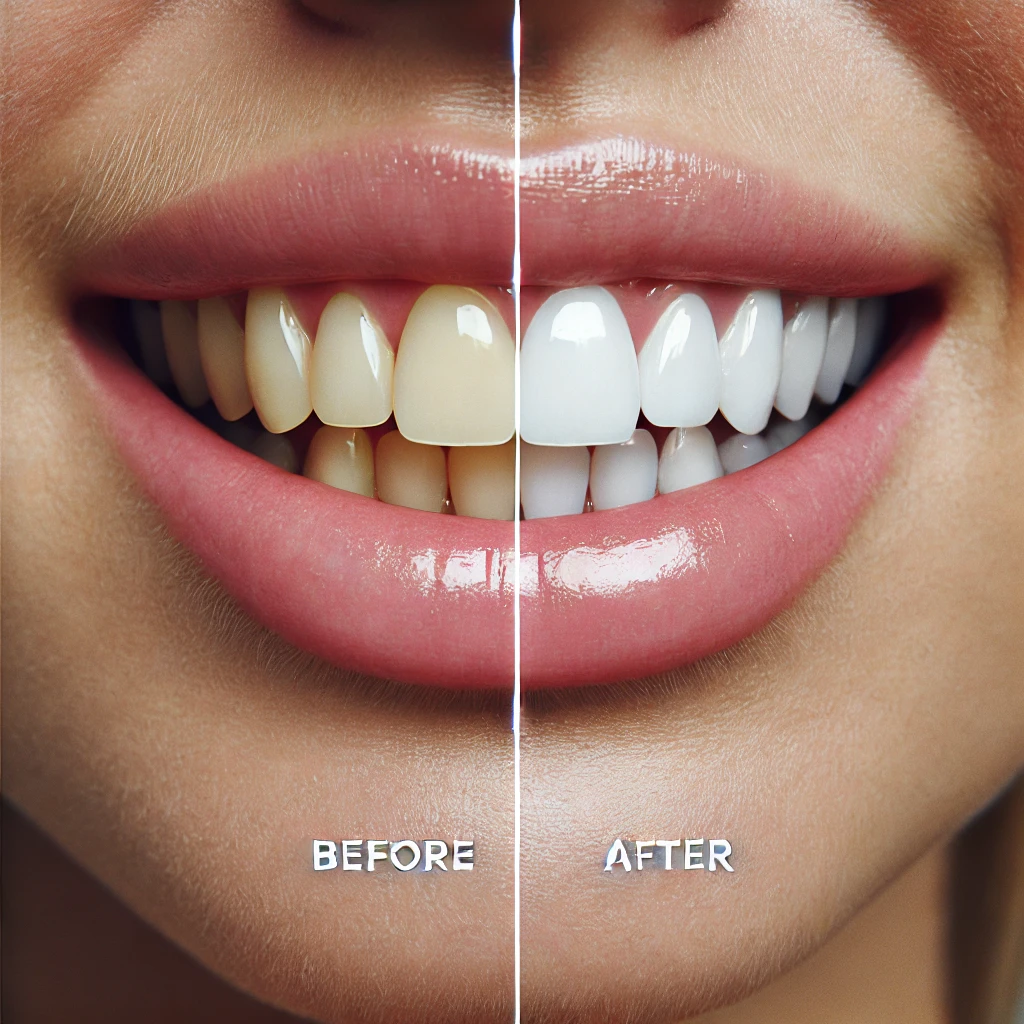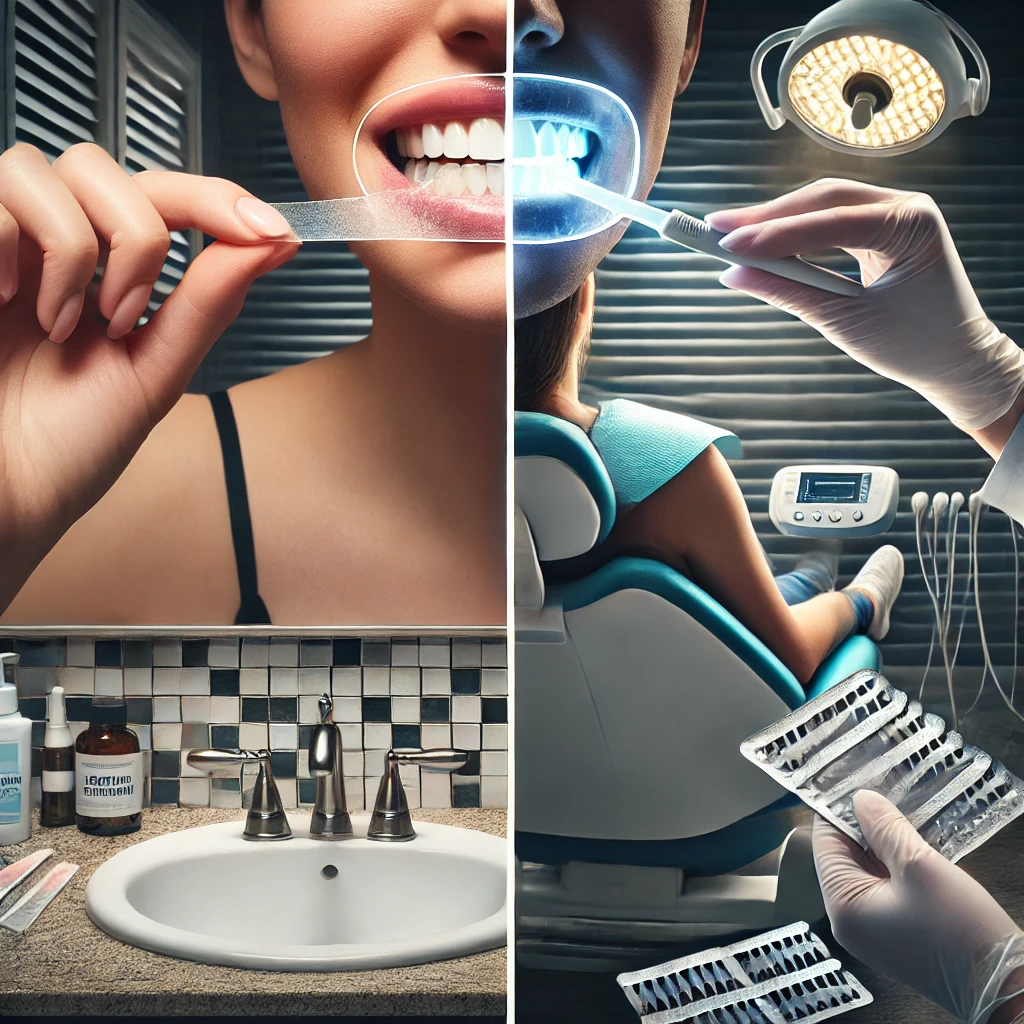Dental whitening has become a popular cosmetic procedure, with millions of people seeking brighter smiles each year. From over-the-counter products to professional treatments, the quest for whiter teeth is more accessible than ever. But with accessibility comes a crucial question: Is dental whitening safe? This article will explore the safety aspects of the practice, including the methods used, potential risks, and best practices for achieving a safe and effective outcome.

Understanding Dental Whitening
Dental whitening, or teeth bleaching, refers to the process of removing stains and discoloration from the teeth to achieve a brighter appearance. The primary agents used in whitening products are hydrogen peroxide and carbamide peroxide, which work by breaking down stains on the surface of the teeth.
Common Methods
- Over-the-Counter Products: These include whitening toothpaste, strips, gels, and rinses available at pharmacies. They are generally less expensive and easy to use but may not provide dramatic results.
- Professional In-Office Whitening: Conducted by dental professionals, this method uses higher concentrations of bleaching agents for quicker and more noticeable results. It often involves using a laser or light to accelerate the whitening process.
- Take-Home Kits from Dentists: These kits are customized to fit the patient’s mouth, offering a middle ground between over-the-counter products and in-office treatments. They are generally more effective than OTC products but less intense than professional treatments.
Factors Influencing Results
Several factors can affect the results of teeth whitening, including:
- Age: Teeth naturally darken with age, making whitening treatments potentially less effective in older individuals.
- Diet: Foods and drinks like coffee, tea, red wine, and tobacco can cause staining.
- Oral Hygiene: Regular brushing and flossing can help maintain whitening results.
- Genetics: Some people naturally have whiter teeth than others.
Is Dental Whitening Safe?
The safety of the practice depends on the method used, the concentration of bleaching agents, and individual factors such as oral health. Here’s a detailed look at the safety considerations for each whitening method:
Over-the-Counter Products
Safety Considerations:
- Low Concentration: OTC products contain lower concentrations of bleaching agents, generally making them safe for most users. However, misuse or overuse can lead to adverse effects.
- Potential Side Effects: Users may experience tooth sensitivity or gum irritation, especially if the product is used incorrectly or for prolonged periods.
- Effectiveness: These products often provide limited whitening effects, leading some individuals to overuse them, which can increase the risk of adverse effects.
Professional In-Office Dental Whitening
Safety Considerations:
- Higher Concentration: Professional treatments use higher concentrations of bleaching agents, which can lead to faster results but also increase the risk of sensitivity.
- Controlled Environment: The procedure is conducted by dental professionals who can monitor and adjust the treatment as needed, minimizing risks.
- Potential Side Effects: Temporary tooth sensitivity and gum irritation are common but usually resolve within a few days.
Take-Home Kits from Dentists
Safety Considerations:
- Customized Fit: These kits are designed to fit the individual’s mouth, reducing the risk of gum irritation compared to OTC products.
- Moderate Concentration: The concentration of bleaching agents is typically higher than OTC products but lower than in-office treatments, providing a balance between safety and effectiveness.
- Potential Side Effects: Similar to professional treatments, temporary sensitivity may occur.
Safety for Specific Populations
- Pregnant and Nursing Women: The safety of whitening during pregnancy and nursing is not well-studied, so it is generally recommended to postpone whitening treatments during these periods.
- Children and Adolescents: Whitening is not typically recommended for individuals under 16, as their teeth are still developing, which may increase the risk of sensitivity and damage.
- Individuals with Dental Issues: Those with cavities, gum disease, or exposed roots should address these issues before undergoing whitening treatments to avoid complications.
Potential Risks and Side Effects of Dental Whitening
While it is generally safe for most individuals, there are potential risks and side effects to consider:
Tooth Sensitivity
- Cause: Whitening agents can temporarily increase tooth sensitivity by penetrating the enamel and affecting the nerve endings.
- Management: Using toothpaste designed for sensitive teeth, reducing the frequency of whitening treatments, and avoiding very hot or cold foods and beverages can help manage sensitivity.
Gum Irritation
- Cause: Contact with bleaching agents can irritate the gums, especially if the whitening tray or strips do not fit properly.
- Management: Ensuring a proper fit and following the manufacturer’s instructions can minimize gum irritation. Professional supervision can also help.
Enamel Damage
- Cause: Overuse or misuse of whitening products can damage the enamel, making teeth more susceptible to decay and sensitivity.
- Prevention: Following recommended guidelines and consulting with a dental professional before starting a whitening regimen can prevent enamel damage.
Uneven Whitening
- Cause: Existing dental work such as crowns, veneers, or fillings does not respond to whitening agents, potentially resulting in uneven color.
- Management: Discussing options with a dentist can help achieve a uniform appearance, possibly involving replacing or adjusting existing dental work.
Allergic Reactions
- Cause: Some individuals may be allergic to ingredients in whitening products.
- Management: Discontinuing use and consulting with a healthcare professional if an allergic reaction occurs is essential.
Best Practices for Safe Dental Whitening
To ensure safe and effective application, consider the following best practices:
Consult a Dental Professional
- Initial Assessment: Before starting any whitening treatment, consult with a dentist to assess oral health and discuss the best options based on individual needs and goals.
- Professional Supervision: Opting for professional treatments can provide better results with minimized risks.
Follow Instructions Carefully
- Product Guidelines: Adhere to the instructions provided with whitening products to avoid overuse and potential side effects.
- Duration and Frequency: Limit the duration and frequency of treatments as recommended by the product or dental professional.
Choose the Right Products
- ADA Seal of Acceptance: Look for products with the American Dental Association (ADA) Seal of Acceptance, indicating they meet safety and effectiveness standards.
- Reputable Brands: Choose products from reputable brands known for quality and safety.
Maintain Oral Hygiene
- Regular Brushing and Flossing: Maintaining good oral hygiene can enhance and prolong whitening results.
- Routine Dental Check-ups: Regular dental visits can help monitor oral health and address any issues that may affect whitening results.
Consider Alternatives
- Natural Remedies: Some individuals opt for natural whitening methods, such as baking soda or activated charcoal. However, these methods lack scientific backing and may have varying effectiveness and safety.
- Lifestyle Changes: Reducing consumption of staining foods and drinks, quitting smoking, and maintaining good oral hygiene can help achieve and maintain whiter teeth without aggressive whitening treatments.
Recent Advances in Dental Whitening
The field has seen several advancements, enhancing both safety and effectiveness. Here’s a look at some recent developments:
Laser Whitening
- How It Works: Laser whitening uses a laser to enhance the effects of bleaching agents, allowing for faster and more targeted whitening.
- Safety and Effectiveness: This method can provide dramatic results in a single session, but it requires professional supervision to ensure safety.
LED Light Technology
- How It Works: LED light accelerates the whitening process when used in conjunction with bleaching agents.
- Benefits: This method is gaining popularity due to its efficiency and reduced treatment time compared to traditional methods.
Enamel-Safe Formulas
- Advancements: New formulations focus on protecting enamel while providing effective whitening, reducing the risk of damage and sensitivity.
- Consumer Options: These products are often marketed as “gentle” or “sensitive-friendly,” catering to individuals concerned about enamel health.

Ethical and Environmental Considerations
In addition to safety, ethical and environmental considerations are becoming increasingly important:
Ethical Concerns
- Advertising and Expectations: Some marketing strategies may create unrealistic expectations, leading consumers to overuse products in pursuit of perfect results.
- Informed Consent: Ensuring that consumers understand the potential risks and limitations of whitening treatments is essential for ethical practice.
Environmental Impact
- Packaging Waste: The production and disposal of whitening products contribute to environmental waste. Choosing products with minimal packaging or recyclable materials can mitigate this impact.
- Chemical Disposal: Improper disposal of chemical agents can harm the environment. Consumers should follow guidelines for disposal and opt for environmentally friendly products when possible.
Conclusion
Dental whitening is a widely sought-after cosmetic procedure with various methods available to suit different needs and preferences. While generally safe for most individuals, it is not without potential risks and side effects. Understanding the safety considerations, consulting with dental professionals, and following best practices can help ensure a positive and safe whitening experience.
Whether you choose over-the-counter products, professional treatments, or take-home kits, it’s essential to prioritize oral health and safety. By doing so, you can achieve a brighter smile while minimizing potential risks, contributing to overall dental well-being.
Ultimately, the key to successful dental whitening lies in informed decision-making, responsible use, and ongoing oral care. With the right approach, you can enjoy the benefits of a dazzling smile without compromising your dental health.

